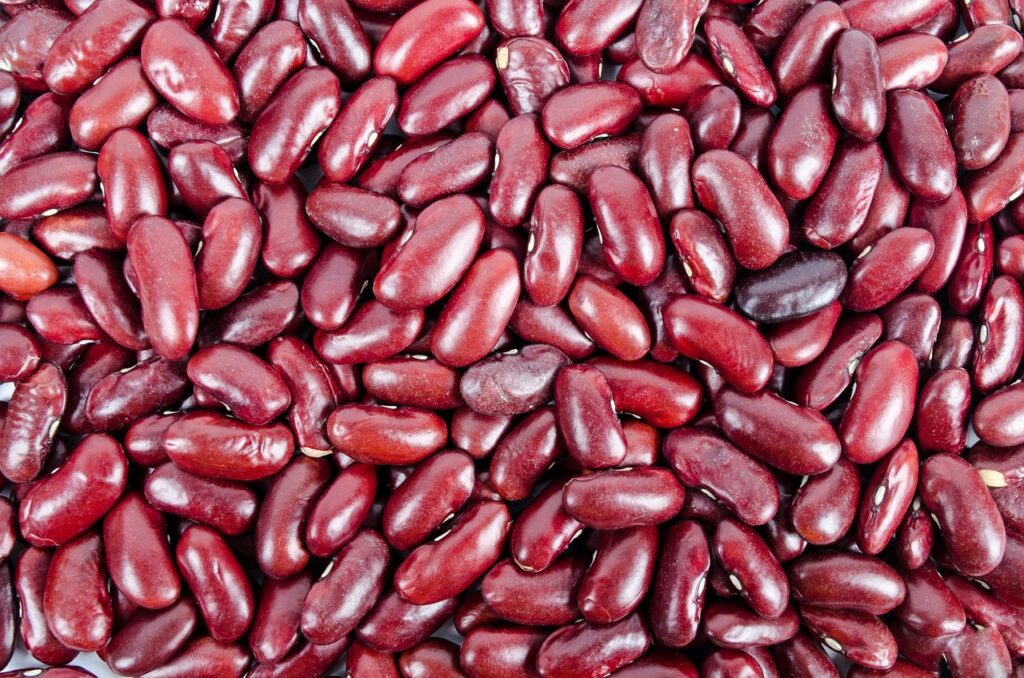Our Food Learning Officer, Ceri Jones talks us through the many different types of beans, and some tips and recipe ideas for using them in the kitchen.
Beans are part of the legume family. They follow behind grains (such as rice and wheat) as a top staple ingredient across the world, so it’s no surprise that they are an economical ingredient.
Beans are also good for you; an excellent source of fibre being their main selling point.
Beans are seeds, and grow inside inedible pods. Sometimes we eat the pods themselves, but still call them beans (runners and French beans for example).
We package and sell beans in a variety of ways, and it will depend on the bean. Those that are eaten as a vegetable are sold fresh, frozen or canned – these include green beans, runner beans and broad beans. The rest are then sold dried, or cooked in a can – chickpeas, cannellini beans, kidney beans etc. These are used in cooking as a protein source, and are more likely to come under the category of staple ingredient. Beans can also be sprouted (beansprouts are sprouted mung beans), or fermented (soy, and soy derived products such as soy sauce and tempeh).
Can you now see how they became to be such a staple ingredient – their versatility is endless!
Many of the beans we may be familiar with in the UK have multiple names across the world, even within the same language so it may be confusing.
Here are 5 uses for 5 different types of beans
Broad beans, also known as fava beans, are usually available fresh (sold in their pods) or frozen (out of their pods) in the UK, and fresh ones are in season in the summer months from June to August. The Garden Museum Café often has them on the menu around this time of year. You’ll need to take them out of their pods before cooking. They need blanching in boiling water for around 5 minutes depending on their size, and then if you like you can slip their tough skins off too. Smashed broad beans on toast with soft goats cheese or ricotta is a tasty alternative to the ubiquitous avocado on toast! You might like our broad bean dip recipe.
French beans, are often sold pre-trimmed but it shouldn’t take too long to trim them yourselves should you chose to. These beans only need a brief blanching or steaming – 2 to 3 minutes – if you like to retain their crunch. Once cooked, immediately run them under the cold water tap, this should help them retain some of their vibrant green colour. You can then add them to salads – my favourite of which is the classic Niçoise with lettuce, tuna and eggs.
Chickpeas, also known as Garbanzo beans are the key ingredient in hummus. Hummus means chickpea in Arabic. To make your hummus more interesting you can add roasted vegetables such as peppers, or beetroot. To do this take a regular hummus recipe and substitute half of the chickpeas with equal weight vegetables. Don’t forget the tahini too – hummus doesn’t taste like hummus without it. My personal favourite is a hummus loaded with lemon zest and fresh coriander.
Borlotti beans, are sold fresh in the summer. Their pods have an incredible colour – a swirl of white and purple. Borlottis are also sold cooked in tins, and these can be used for quick nourishing winter stews. If you want to give one a try, look up a recipe for the Tuscan Ribollita – a stew based on the cavolo nero cabbage, with other veggies and beans too. You can used, fresh, dried or tinned beans in this recipe but you will need to adjust your recipe to suit.
Kidney beans, are usually sold dried or tinned. You can’t eat these raw as they will give you an upset stomach. They are the beans usually used in the Caribbean ‘Rice & Peas’ dish, along with coconut, and flavoured with thyme and allspice. The exact recipe will vary depending on which Caribbean chef you ask.
We didn’t have space to include runner beans, helda (flat) beans, edamame beans, haricot beans (the ones in baked beans), butter beans, black beans, pinto beans or cannellini beans, and these are just the tip of the bean iceberg. You’ll have to let us know what your favourite recipes using these are!
Article by Ceri Jones, Food Learning Officer





